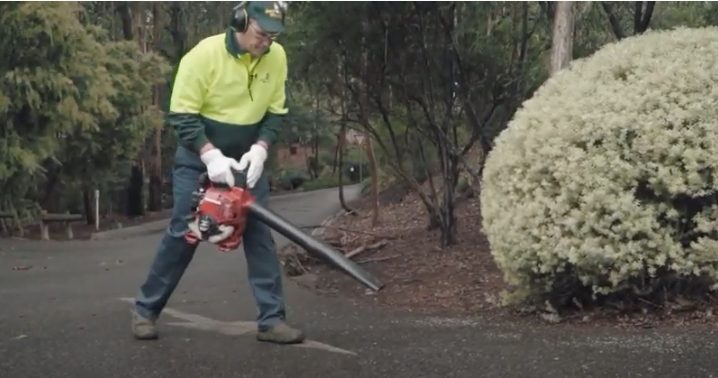How to use a leaf blower like a PRO
Autumn has come and gone, which means many trees have now shed their leaves. While the leaves on the ground can be a different look (and sometimes fun to jump on, if you see a particularly crunchy-looking one!), many may wish to scoop them into a garden bed or dispose of the dead leaves. Dried leaves can be placed into a green bin, or added to your compost bin.
One way to clear leaves is to use a leaf blower. But leaf blowers aren’t just made for blowing leaves (despite what the name might suggest), these machines can also be used to dry wet surfaces and moving grass clippings. They’re pretty versatile pieces of equipment, which is why it can be handy to know how to use them!
There is more to leaf blowing than buying a machine, bringing it home, and turning it on. It’s important to consider safety precautions that need to happen, the time of day to use the leaf blower, and how to do so efficiently – just to name a few!
The internet has many video resources showing how to use a leaf blower – in fact, we have one ourselves – which could be helpful if you wish to learn the basics, check out our video below. If you would like additional help to keep your garden looking tidy, the team at Jim’s Mowing NZ provide complete Lawn Mowing and Garden Maintenance services throughout New Zealand.
In this article, we take a look at some additional tips and tricks regarding how to use a leaf blower, including how to efficiently move debris!
Using a leaf blower
Which blower to choose?
Before you begin on the job, you’ll need to pick out a blower. There are many different varieties of leaf blower on the market from smaller models through to large, powerful machines. There are Stihl leaf blowers, Ryobi leaf blowers, Husqvarna leaf blowers, plus blowers from many other brands. When it comes to choosing the best leaf blower for your needs, things to consider include how large the jobs you wish to tackle are, and how often you’re looking to use the machine. Be sure to do research into different brands and models, to find the type that is best for you!
Choose an appropriate time
While not everyone has the same work or sleeping schedule, choosing a time of day when most people are awake (and not trying to put their kids to sleep!) is a must when using a leaf blower at your residential property. Being woken up by a leaf blower isn’t the most peaceful way to start the day, so try to start work at a suitable time. If you want to take an extra step of consideration, think about knocking on your neighbours’ doors and asking them what times suit best for loud garden and housework.
Use safety gear
It is important to ensure you are equipped with proper protection when using a leaf blower. Before beginning the job, be sure to put on protective eyewear, filled-in shoes, gloves, ear protective equipment, and covered clothing. Make sure no loose clothing ties or strands of hair are flying about, and keep an eye out for where others are around you when doing the job. Ensuring you use these machines safely is imperative, so be sure you are stocked up on safety gear and protection before you begin!
Don’t rush in and start blowing the debris
While it can be exciting to get started, it’s best to not rush into it before thinking about the how. If you approach the item you wish to clear with too much force, you could find it blowing back and then having a bigger mess to have to clean up! What you want to do is start a bit further back, making sure to work around the debris you wish to move, and blow it into the spot you wish to move it to.

Decide where you want the debris to be moved to
This may seem like an obvious tip, but it’s good to think about where you want your product to be moved to before you begin the process of clearing it. Are you looking to blow your leaves into a garden bed, or are you trying to make a pile so that it can be cleared more efficiently? Decide this before the job has started to avoid confusion (and the blowing of leaves back and forth in indecision!). Leaves can be a great addition to a compost bin, so don’t feel like they all need to end up in the garbage!
Don’t try to clear wet garden debris
Trying to clear wet debris just doesn’t work very well, so don’t think you’ll be popping outside to clear leaves away right after a rainstorm has passed! Wet and damp garden debris doesn’t much like to be blown around, making the task a lot harder (and more frustrating) for you. Wait until the debris has dried before attempting to clear it and it should easily be shifted.
We hope this article has been useful in showing some tips and tricks regarding how to use a leaf blower. Leaf blowers can make a great addition to your garden machinery, but it’s important to be informed (and well-protected) before you begin! If you would like to find out more about these machines and their uses, there are many great resources available on the web (and in books) explaining the process in more details. Good luck with your clearing!


